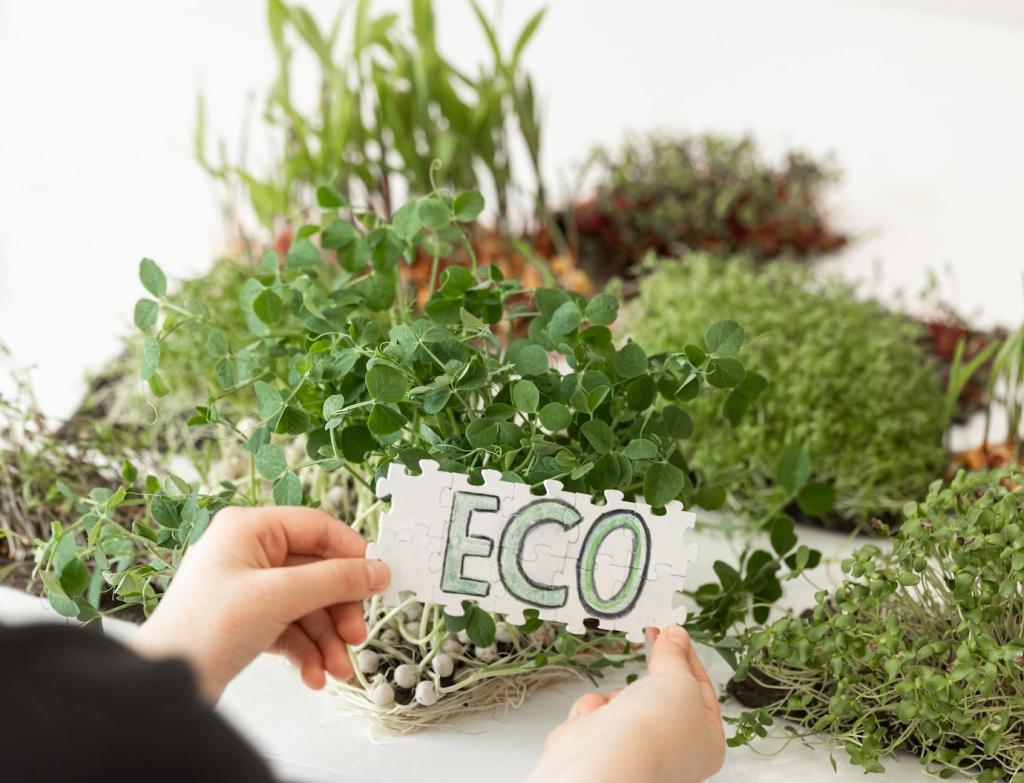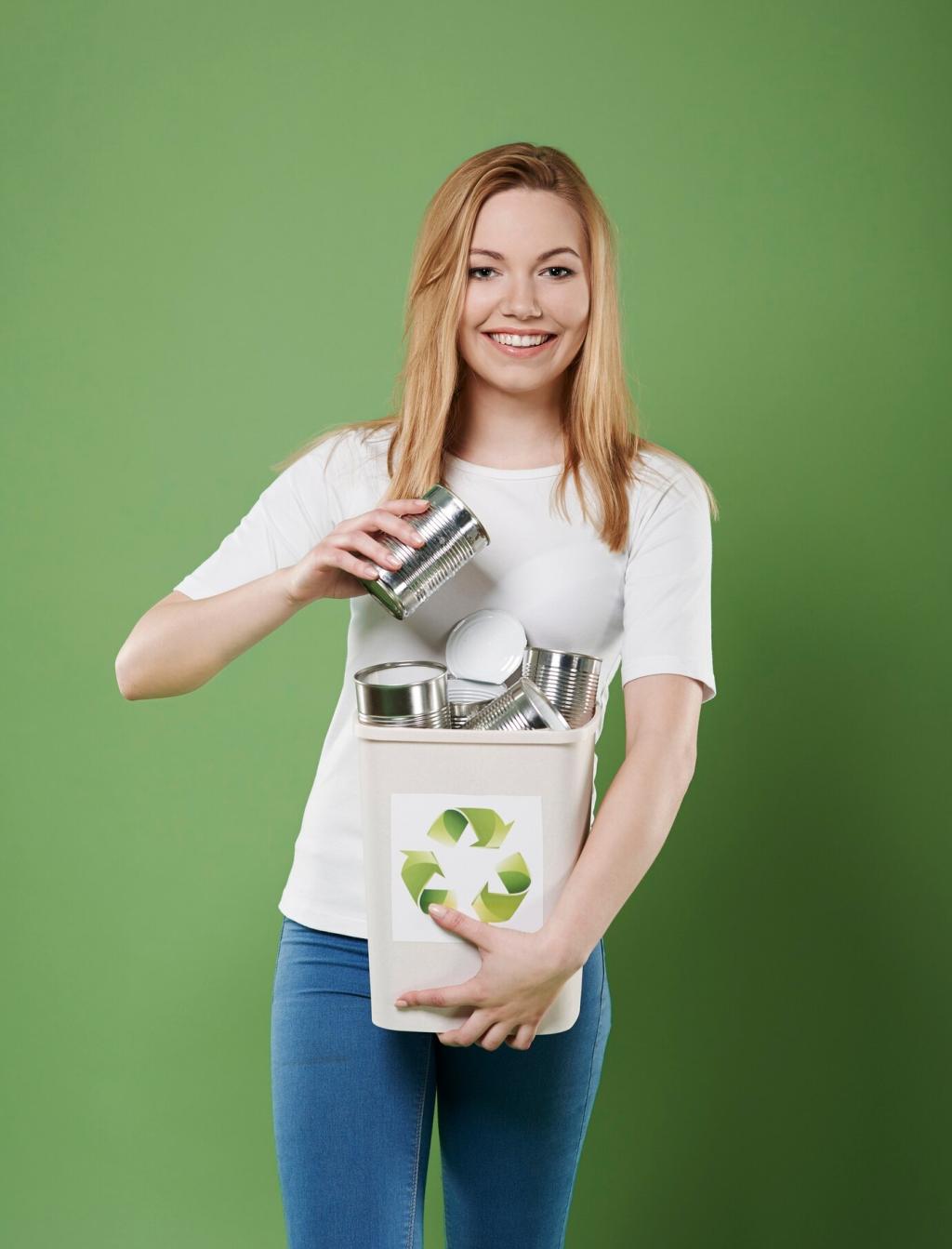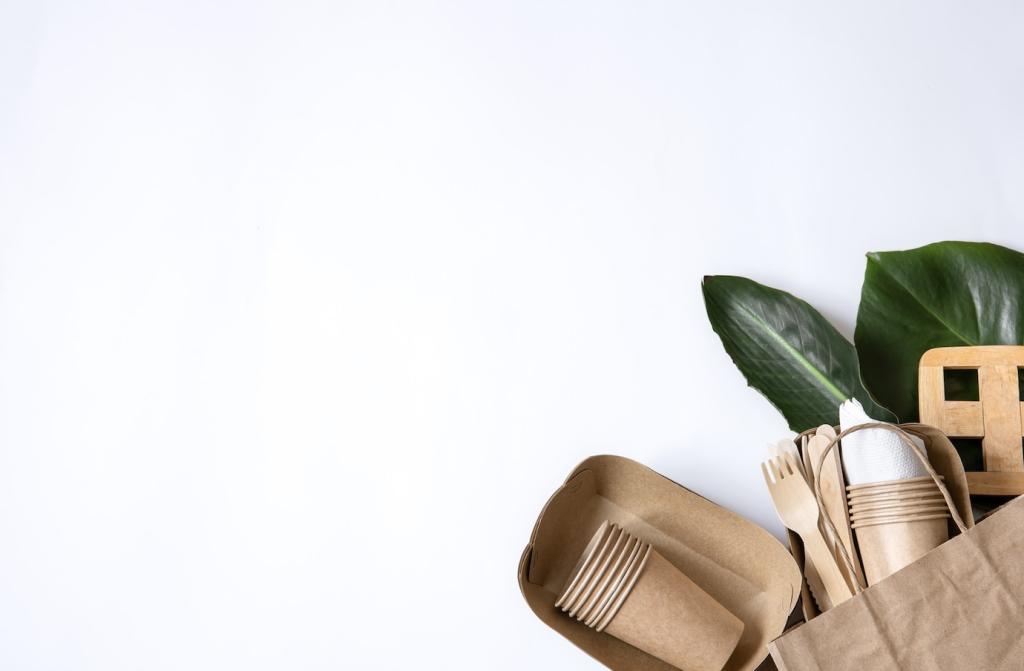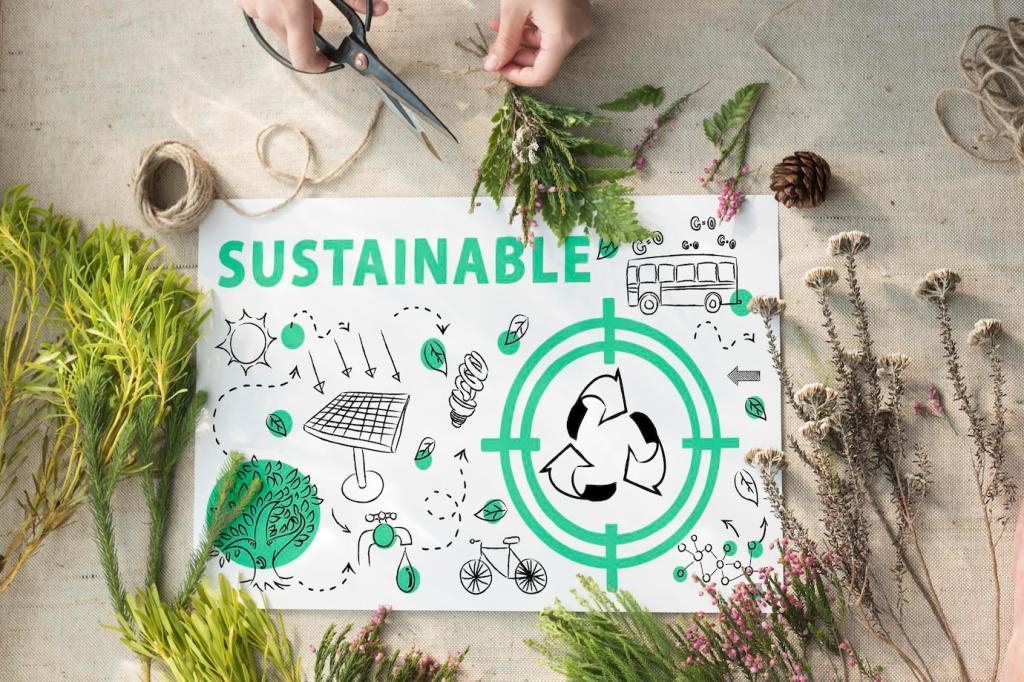Green Solutions for Leather Maintenance
Chosen theme: Green Solutions for Leather Maintenance. Welcome to a kinder way of caring for leather—where longevity, low-toxicity methods, and mindful habits meet. Explore proven eco-friendly recipes, practical routines, and community wisdom that keep your favorite pieces beautiful for years. Subscribe, comment, and join our green-care journey today.

Understanding Leather the Eco‑Friendly Way
Know Your Leather Types Before You Clean
Full-grain, top-grain, nubuck, and suede all respond differently to moisture and surfactants. Patch test every method in a hidden spot, use distilled water to prevent mineral spots, and keep motions light and consistent. A few informed minutes now prevent over-wetting, dye lift, and avoidable damage later.
Why pH Balance and Gentle Surfactants Matter
Leather is a collagen-based material that prefers mild, pH-balanced care. Green, plant-derived surfactants cleanse surface soils without stripping natural oils. Harsh alkalinity can encourage microcracking, while overly acidic solutions dry fibers. Gentle, balanced cleaning protects the grain, retains suppleness, and reduces long-term product consumption.
A Short Story of a Saved Vintage Bag
A flea‑market satchel, stiff from attic heat, softened with a few mists of diluted castile soap and careful conditioning. After slow drying away from sunlight, a carnauba-based balm restored luster without slickness. That bag now joins weekend walks, a small proof that patient, green methods can revive memory and material together.
Low‑Impact Cleaning Recipes You Can Trust
Mix one teaspoon of unscented castile soap into 250 milliliters of distilled water. Lightly spritz a soft cloth, then wipe along the grain with minimal passes. Immediately follow with a dry cloth to remove residual moisture. Keep hardware dry, avoid soaking seams, and patch test on a discreet area first.
Low‑Impact Cleaning Recipes You Can Trust
For surface mold on finished leather, combine one part white vinegar with four parts distilled water. Lightly dampen a cloth, gently lift the growth, and allow airy drying away from heat. Condition afterward to rebalance oils. Avoid this method on suede or nubuck, where nap can mat and color may shift.


Conditioning with Plant‑Based Oils and Waxes
Jojoba and Shea, the Balanced Pair
Jojoba’s wax‑ester structure closely mimics natural sebum, while refined shea offers soft conditioning without greasiness. Warm a rice‑grain amount between fingers, massage sparingly, and let the leather rest. Buff with a clean cloth. Avoid olive oil, which can oxidize, and always aim for breathable, non‑tacky finishes.
Carnauba‑Based Balms for a Dry Climate
A balm blending carnauba and candelilla wax with light botanical oils creates a protective, micro‑thin shield. Apply in circular motions, then buff to a satin sheen that resists dust and brief drizzles. This approach reduces reapplication frequency, saving product and preserving texture in arid or heated indoor environments.
Avoiding Build‑Up and Silicone Traps
Silicone-heavy products can seal pores, flatten patina, and complicate future repairs. Choose breathable, plant‑forward formulas and maintain a light, regular schedule. If leather feels tacky or dull, pause conditioning and gently cleanse before rebalancing. A white‑cloth buff test helps confirm whether residue remains or absorption is complete.
Water‑Based Adhesives and Patch Techniques
For delamination or small tears, a low‑VOC, water‑based contact adhesive offers strong, kinder bonding. Back larger tears with a thin leather patch, align fibers, and press under a heavy book with a breathable cloth barrier. Allow generous cure time, then gently condition the area to restore surface harmony.
Thread, Needles, and Conscious Tools
Waxed linen or recycled‑content polyester thread, paired with a saddler’s stitch, yields durable seams. Reuse tools, share kits with friends, and organize small offcuts for future patches. A simple awl, blunt needles, and patient pacing turn intimidating repairs into meditative routines that respect both craft and climate.
A Cobbler’s Wisdom Worth Sharing
A neighborhood cobbler once showed me how careful edge burnishing with plant‑derived gums and a touch of natural wax transformed a frayed strap. The repair outlasted the original finish, proving technique matters more than shine. Ask questions locally—craft knowledge keeps heirlooms alive and cuts environmental costs dramatically.
Storage, Air, and Light: Environmental Stewardship at Home
Choose cotton dust bags over plastic bins that trap moisture. Add untreated cedar blocks to deter pests, and keep items off direct floors. Maintain stable room temperatures, and avoid radiators or vents. A little airflow and gentle spacing prevent creases, odors, and the need for aggressive cleanups later.

Buying Better: Materials and Certifications
Vegetable tanning relies on plant tannins like mimosa and quebracho, allowing richer patinas and more responsible wastewater handling. Look for makers who publish sourcing details and repair policies. A slower, traceable supply chain supports better worker safety, reduced chemical loads, and leather that ages with authentic character.

Community, Ritual, and Accountability
Post your gentle cleanups, proud repairs, and careful storage wins. Describe products, timings, and patch‑test results so others can learn. Tag your photos, ask questions, and encourage friends to adopt lighter routines. Your narrative can save someone else’s bag—and spare the planet a replacement.
Community, Ritual, and Accountability
Join our rotating challenges: hydration checks, repair‑a‑stitch week, mold‑prevention audits, and finish‑safe buffing sessions. Each task takes minutes, yet compounds protective benefits. Comment with your outcomes, share feedback, and suggest future themes. Together, we normalize gentler habits and make maintenance a shared, joyful tradition.
Community, Ritual, and Accountability
Subscribe for printable recipes, seasonal reminders, and product spotlights vetted for low toxicity and high performance. You will receive concise checklists, deeper how‑tos, and occasional interviews with tanners and cobblers. Reply with topics you want covered, and help guide our next green care deep dive.
